
Proceedings of the ACM on Computer Graphics and Interactive Techniques
Scope & Guideline
Driving the Future of Graphics with Cutting-Edge Insights
Introduction
Aims and Scopes
- Real-Time Rendering Techniques:
Research focusing on methods for real-time rendering, including innovations in ray tracing, path tracing, and shading techniques that allow for high-quality graphics in interactive applications. - Procedural Content Generation:
Studies that explore algorithms for generating content dynamically, such as textures, landscapes, and animations, often using GPU acceleration to enhance performance. - Machine Learning and AI in Graphics:
Integration of machine learning techniques into graphics, such as using deep learning for image synthesis, segmentation, and enhancing rendering processes. - Human-Computer Interaction (HCI):
Research investigating the interaction between users and graphical interfaces, including virtual reality (VR) and augmented reality (AR) experiences, and the usability of interactive systems. - Artistic and Creative Applications:
Explorations of the intersection between computer graphics and artistic expression, including projects that utilize technology for creative installations and interactive art. - Simulation and Modeling:
Development of realistic simulations for various phenomena, including fluid dynamics, cloth simulation, and physical interactions in virtual environments. - Visual Effects and Animation:
Research on techniques for creating visual effects and animations, covering both traditional and innovative methods for character animation and environmental effects.
Trending and Emerging
- AI-Driven Techniques:
There is a surge in research incorporating AI and machine learning methodologies, particularly in areas like neural rendering, deep learning for image processing, and generative models, indicating a trend towards intelligent graphics systems. - Hybrid Realities and Immersive Experiences:
Research on VR and AR technologies, particularly those that blend physical and digital experiences, is increasingly prevalent, showcasing the demand for immersive environments that enhance user engagement. - Real-Time Simulation and Interaction:
Emerging techniques for real-time simulations, especially in the context of physics-based interactions and environmental dynamics, are becoming a focus area, reflecting a need for realistic and responsive graphical applications. - Environmental and Climate Awareness:
Papers that address climate change and environmental issues through visual and interactive means are on the rise, highlighting the role of graphics in social and environmental advocacy. - Collaborative and Social Interaction in Graphics:
Themes exploring collaborative aspects of graphics, such as multiplayer interactions in gaming and social experiences in virtual environments, are gaining traction as user engagement becomes a priority.
Declining or Waning
- Traditional Graphics Algorithms:
There is a decreasing emphasis on classical graphics algorithms that do not incorporate modern computing techniques or leverage AI, as there is a shift towards more innovative and efficient approaches. - Static Rendering Techniques:
Research related to static rendering methods, which do not adapt to real-time requirements or user interactions, is becoming less prominent, overshadowed by the demand for dynamic and interactive solutions. - Non-Interactive Installations:
The focus has shifted away from purely non-interactive art installations toward interactive experiences that engage users, reflecting a broader trend in technology-enhanced art. - Basic Graphics Education and Tutorials:
Papers centered on fundamental graphics education or introductory tutorials are less frequent, as the journal leans more towards advanced research topics and innovative applications.
Similar Journals
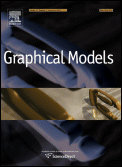
GRAPHICAL MODELS
Pioneering New Dimensions in Computer Graphics and DesignGRAPHICAL MODELS, published by Academic Press Inc Elsevier Science, is a cutting-edge journal in the fields of Computer Graphics and Computer-Aided Design, Geometry and Topology, Modeling and Simulation, and Software. Since becoming Open Access in 2023, it has expanded its reach, facilitating scholarly communication and encouraging a diverse range of submissions. Operating from the heart of San Diego, United States, the journal has established itself with an impressive ranking, including a Q2 category in multiple disciplines and a notable position in Scopus, particularly in Geometry and Topology, where it ranks #8 out of 106. This journal aims to provide a comprehensive platform for innovative research and application-focused studies, attracting the attention of researchers, professionals, and students who are keen to explore the dynamic landscape of graphical models and their implications across various scientific and engineering domains. With its commitment to publishing high-quality research, GRAPHICAL MODELS is a pivotal resource for anyone interested in advancing the frontiers of graphical representations and simulations.

Computational Visual Media
Elevating research standards in AI and computer graphics.Computational Visual Media, published by TSINGHUA UNIVERSITY PRESS, is a premier open access journal dedicated to advancing the fields of Artificial Intelligence, Computer Graphics and Computer-Aided Design, and Computer Vision and Pattern Recognition. Since its inception in 2015, it has established a robust position within the academic community, consistently achieving Q1 rankings across its categories as of 2023. With exceptional Scopus rankings, including a remarkable percentile standing in the top 10% globally, the journal serves as a vital resource for researchers, professionals, and students eager to explore cutting-edge methodologies and technologies in computational visual media. The journal’s open access format enhances accessibility, fostering global collaboration and dissemination of knowledge, making it an indispensable platform for those at the forefront of innovation in these dynamic fields. The journal is headquartered in Beijing, China, and aims to publish high-quality research that not only contributes to theoretical advancements but also addresses practical challenges within computational visual technologies.
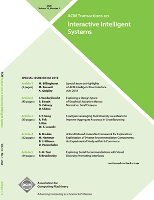
ACM Transactions on Interactive Intelligent Systems
Innovating Tomorrow's Interactive Intelligent Systems Today.ACM Transactions on Interactive Intelligent Systems is a distinguished journal published by the Association for Computing Machinery (ACM), specializing in the realms of Artificial Intelligence and Human-Computer Interaction. With an impactful presence in the academic community, it boasts a respectable Q2 quartile ranking in both fields as of 2023, highlighting its significant contributions to advancing interactive intelligent systems. The journal, identified by ISSN 2160-6455 and E-ISSN 2160-6463, encompasses a broad spectrum of research from theoretical advancements to practical implementations, offering invaluable insights for researchers, professionals, and students. The journal not only serves as a platform for innovative ideas and methodologies but also emphasizes the importance of interdisciplinary approaches in its publications. Positioned in the United States, at 1601 Broadway, 10th Floor, NEW YORK, NY 10019-7434, it stands out for its commitment to quality, rigor, and relevance within the computing and interactive systems sectors.
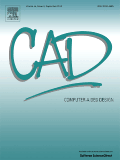
COMPUTER-AIDED DESIGN
Elevating Design Practices with High-Impact ResearchCOMPUTER-AIDED DESIGN is a premier journal published by Elsevier Science Ltd, dedicated to the dynamic fields of Computer Graphics and Computer-Aided Design, as well as Industrial and Manufacturing Engineering. With a long-standing history since its inception in 1968, this journal plays a vital role in disseminating high-quality research and innovative methodologies that shape the future of design and engineering practices. It is positioned in the upper quartiles (Q1 and Q2) across multiple categories, highlighting its impact and reputation, with a notable 74th percentile ranking in Computer Graphics and Computer-Aided Design related fields. Researchers, professionals, and students will find valuable insights and advancements that not only push the boundaries of knowledge but also facilitate practical applications in the industry. The journal's emphasis on enhancing collaboration between academia and industry aligns with contemporary trends towards integrated design and manufacturing processes, making it an essential resource for anyone looking to stay at the forefront of technological advancement. Authors are encouraged to submit original articles that contribute to the multidisciplinary discourse within these domains.
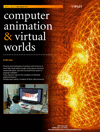
COMPUTER ANIMATION AND VIRTUAL WORLDS
Shaping the Future of Animation and Virtual Reality.COMPUTER ANIMATION AND VIRTUAL WORLDS, published by Wiley, is a pivotal journal in the fields of Computer Graphics and Computer-Aided Design, as well as Software. With a focus on the intersection of technology and creativity, the journal provides a platform for researchers and professionals to share innovative studies, new methodologies, and insights that shape the future of computer animation and virtual environments. Currently holding a Q2 category in Computer Graphics and a Q3 in Software for 2023, it ranks #63 out of 106 in its niche, highlighting its influence and relevance in the academic community. Though the journal operates under a subscription model, it also offers options for open access, ensuring that a broader audience can engage with groundbreaking research. The journal has been publishing continuously since its inception in 2004 and looks forward to further contributions as it moves towards its 20th anniversary in 2024. Whether you are a seasoned researcher, an industry professional, or a student eager to explore these dynamic fields, COMPUTER ANIMATION AND VIRTUAL WORLDS is an essential resource for advancing knowledge and innovation.
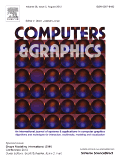
COMPUTERS & GRAPHICS-UK
Transforming Ideas into Visual RealitiesCOMPUTERS & GRAPHICS-UK is a premier journal dedicated to the fields of computer graphics, computer-aided design, and human-computer interaction. Published by Pergamon-Elsevier Science Ltd, this esteemed journal has been a critical resource for researchers and professionals since its inception in 1975. With an impressive impact factor and ranked in the second quartile for key disciplines such as Computer Vision and Pattern Recognition, and Engineering (Miscellaneous), it provides a platform for high-quality, peer-reviewed research spanning theoretical advancements, innovative technologies, and practical applications. Notable for its interdisciplinary approach, the journal also embraces contributions that bridge diverse areas within computer science. Although lacking Open Access options, readers can benefit from its rich archive and cross-disciplinary insights, making it essential for anyone looking to advance their knowledge and practice in computer graphics and related fields. The journal is located in the United Kingdom, at The Boulevard, Langford Lane, Kidlington, Oxford OX5 1GB, and continues to be a cornerstone for scholarly exchange and advancement in the digital visualization domain.

Proceedings of the ACM on Interactive Mobile Wearable and Ubiquitous Technologies-IMWUT
Pioneering Research in Mobile and Ubiquitous ComputingProceedings of the ACM on Interactive Mobile Wearable and Ubiquitous Technologies (IMWUT) is a premier journal published by the Association for Computing Machinery (ACM), dedicated to the rapidly evolving fields of interactive mobile technologies, wearable devices, and ubiquitous computing. Since its inception in 2017, IMWUT has established itself as a vital resource for researchers and practitioners, earning a prestigious Q1 ranking across multiple categories, including Computer Networks and Communications, Hardware and Architecture, and Human-Computer Interaction, as evidenced by its impressive Scopus metrics. With its open-access model and a focus on cutting-edge research, IMWUT aims to disseminate innovative solutions and technological advancements that enhance user experiences across diverse environments. Researchers, industry professionals, and students are encouraged to explore this journal to stay at the forefront of research and developments in interactive technologies.

Journal of Computer Languages
Empowering Knowledge in Computer LanguagesJournal of Computer Languages, published by ELSEVIER SCI LTD in the United Kingdom, serves as a crucial platform for advancing research and discussion in the fields of computer networks, human-computer interaction, and software development. With an ISSN of 2590-1184 and E-ISSN 2665-9182, this journal has established itself as a prominent resource within its category, achieving Q3 rankings in 2023 across its respective domains. As part of Scopus' indexed journals, it stands at impressive ranks of #152/395 in Computer Networks and Communications, #172/407 in Software, and #76/145 in Human-Computer Interaction, reflecting its relevance and contribution to the scholarly community. Operating under an open access model, the journal emphasizes accessibility and collaboration among researchers, professionals, and students keen on exploring innovative applications and advancements in computer languages. With a publication span extending from 2019 to 2024, the year-to-year growth reinforces its commitment to impacting both academia and industry significantly. Engage with cutting-edge research and foster your understanding in computer languages through this essential publication.
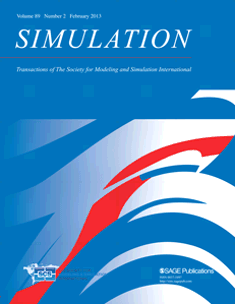
SIMULATION-TRANSACTIONS OF THE SOCIETY FOR MODELING AND SIMULATION INTERNATIONAL
Empowering Researchers with Accessible Simulation SolutionsSIMULATION-TRANSACTIONS OF THE SOCIETY FOR MODELING AND SIMULATION INTERNATIONAL, published by SAGE Publications Ltd, is a pivotal journal in the field of computer graphics, computer-aided design, mathematics, and modeling and simulation. With an ISSN of 0037-5497 and an E-ISSN of 1741-3133, the journal has established itself as a valuable resource since its inception in 1963, boasting a diverse archive leading up to 2024. Ranked in the Q2 category for both Computer Graphics and Mathematics, as well as Q3 for Modeling and Simulation and Software, it reflects a balanced distribution of quality research across multiple disciplines. The journal promotes accessibility through various open access options, ensuring wide dissemination of innovative findings. Researchers, professionals, and students alike will find insightful peer-reviewed articles that delve into advanced simulation methodologies and their applications in real-world scenarios, reinforcing its significant impact on the evolution of the simulation and modeling landscape.
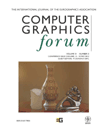
COMPUTER GRAPHICS FORUM
Unveiling New Dimensions in VisualizationCOMPUTER GRAPHICS FORUM, an esteemed journal published by Wiley, is a leading platform for disseminating cutting-edge research in the fields of computer graphics and computer-aided design. With a prestigious Q1 ranking in both Computer Graphics and Computer-Aided Design and Computer Networks and Communications (2023), this journal consistently showcases high-impact studies that influence the development of visualization techniques and graphic systems. Covering a wide array of topics from rendering algorithms to virtual and augmented reality applications, COMPUTER GRAPHICS FORUM is committed to fostering innovation and interdisciplinary collaboration within the global research community. Although it does not offer open access, the journal maintains a rigorous peer-review process, ensuring the highest standards of academic quality and integrity. With its rich history since 1982 and an ongoing commitment to advancing the state of knowledge in computer graphics, this journal is essential reading for researchers, industry professionals, and students looking to stay at the forefront of technological advancements.